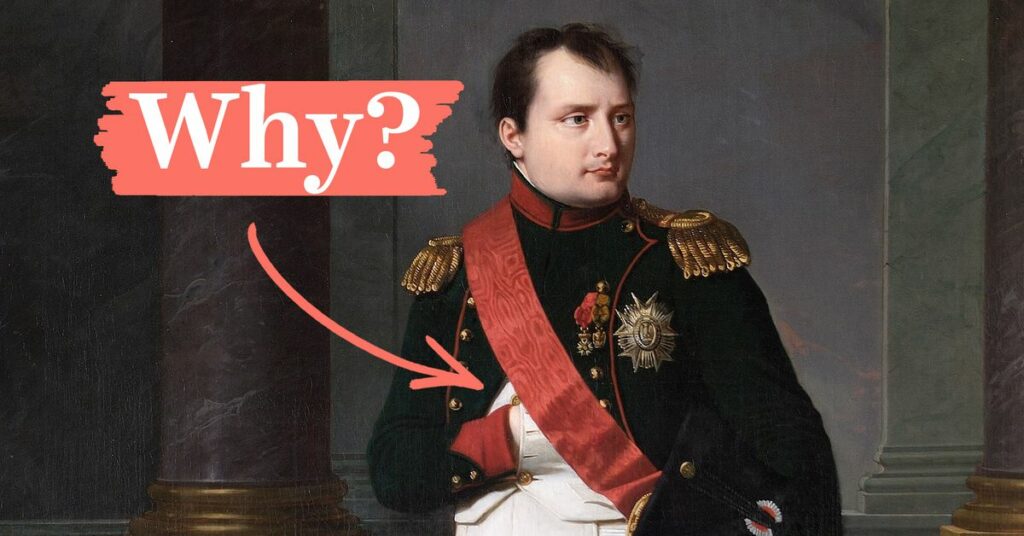Portrait painting is a painting genre whose goal is to depict a specific human subject. Portrait painting can also refer to the finished painted portrait. But did you know why historical icons have one hand in their jackets on their portraits?
Genteel men resting one hand inside their jackets convey calm and good breeding. This is also done to convey confidence and a higher level of character.
The Famous Selfie Pose
If you look through portraits and photographs of famous men from the 18th and 19th centuries, you’ll notice many of them have the same somewhat unnatural-looking pose. They either sit or stand with one hand tucked into the front of their jackets.
If you look at portraits and photographs of famous men from the 18th and 19th centuries, you’ll notice that many have the same slightly unnatural pose. They sit or stand, one hand tucked into the front of their jackets.
The hand-in-waistcoat pose conveyed calm assurance and elevated character by placing one hand inside the top garment.
This gesture dates back to classical times in the 6th century BC. when speaking with both hands outside of tunics was considered impolite, especially when conducting political activities.
It’s not a secret Masonic code or a reference to an Illuminati ritual, either. The custom dates back much further than the 1700s. According to Today I Found Out, some societal circles in ancient Greece considered it impolite to speak with your hands outside of your clothing. As a result, statues from the sixth century BC depicted celebrated orators like Solon with their hands tucked into their cloaks. (Source: Reader’s Digest)
Who Started the Trendy Pose?
It dates back to ancient Greece when famed orator Aeschines claimed that restricting one’s hand movement was the proper way to speak in public.
The craze peaked when several portraits of Napoleon Bonaparte by celebrated artists such as Jean-Auguste-Dominique Ingres, Jacques-Louis David, and Hippolyte Delaroche began to circulate. The hand-in-waistcoat gesture became popular in European and American portraiture at this time.
Little did the ancient Greeks know that their legacy would live on for another 24 centuries. Artists began to look to antiquity for inspiration in the 18th century. They discovered statues of famous speakers posing with their hands in their cloaks. Portraitists began to depict subjects in a similar pose, believing it conveyed a noble, calm demeanor and good breeding.
The trend continued with the invention of photography in the early nineteenth century. From US President Franklin Pierce to Communist Manifesto author Karl Marx, major historical figures were photographed with unbuttoned jackets and hidden hands. It wasn’t until the late 1800s that the pose’s popularity began to wane. Even after that, it appeared in photographs from time to time; Joseph Stalin adopted the stance in a 1948 photograph.
Because of its dignified reputation and its excellent way of sitting still during the long exposure times of early photography, the pose became a portraiture cliché with the advent of photography. (Source: Reader’s Digest)
